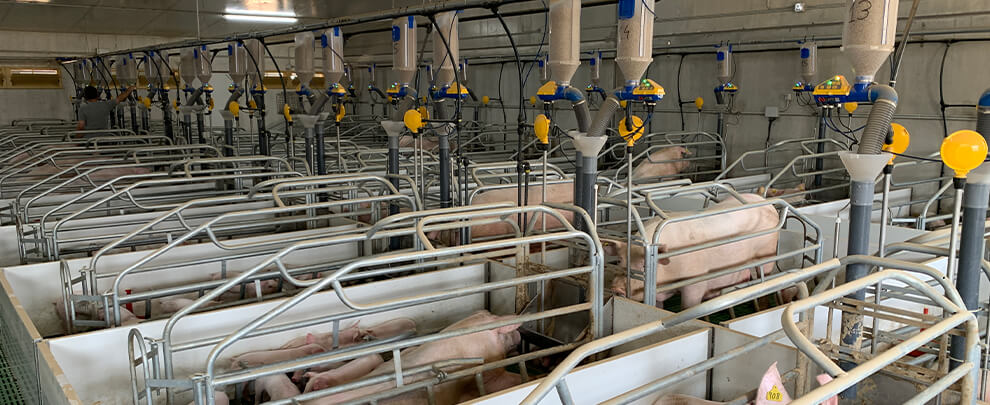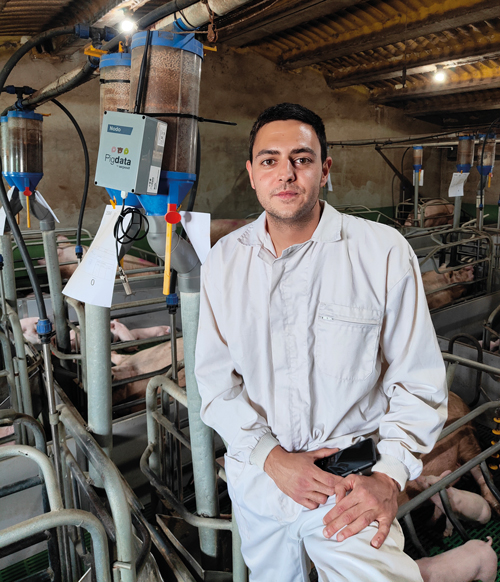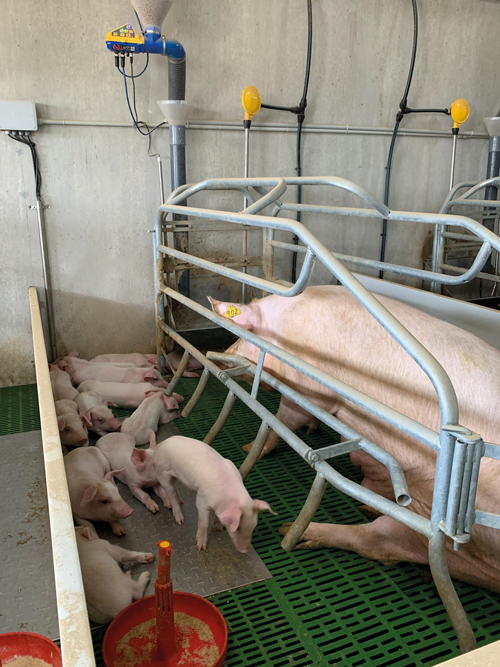Blog
Blog

How can precision farming help us?
29th June 2023 - News
Precision livestock farming allows us to monitor individual animals to improve farm performance. Its objective is, on the one hand, to increase the efficiency of production and, on the other hand, to take care of the health and welfare of animals, as well as to minimize the environmental impact of livestock production. In addition, it provides us with a large volume of data to improve the entire production process, although it is not enough to obtain that data only, you also have to know how to treat them to add value to the farm, the integrator and the sector in general. We talked about these issues with Alejandro Villa, responsible for the PigData project, from the Huesca company Serprovit.

Alejandro Villa, head of the PigData project. Photo: Serprovit.
What have been the most outstanding advances in recent years in terms of precision livestock?
The livestock sector is constantly evolving and in recent years we have seen the emergence of very new technology, especially in terms of artificial intelligence, with sensors adapted to pig production. One of the most important advances that have been made has been the development of a platform that houses all the production process and animal farming data, with the information provided by sensors and equipment installed on the farm.
How important is it to have data during animal farming?
Having historical data can help us predict how animals are going to behave. This gives us a very big advantage over traditional livestock farming since not only are we able to know how the animal will behave under controlled conditions, but we can also take action to lessen any unforeseen event. In this sense, we can say that collecting data during animal rearing is key. We need to know the conditions in which the animals are, the consumption of resources they have, referring to water, feed and medicine consumption; and also, what they are exposed to in environmental terms. This data is not only important to improve productivity, but thanks to constant monitoring we can increase animal welfare too.
"Precision farming gives us the optimisation of human and material resources, the improvement of production processes."
How is the data collection process?
In our case, production data is collected automatically on the one hand, with the simple daily use of the program by the users of the company, and on the other, with the installation of sensors in each farm. Once collected, the data is dumped into a database and a process of cleaning and extraction is initiated through the use of artificial intelligence. After this process, the user has the data he requires. Anyone who is part of the production process (farmers, veterinarians, administration, logistics, etc.) can access it through an easy, simple and intuitive interface.
In addition to data collection, what other advantages does precision livestock farming on our farms offer?
Above all, it gives us the optimisation of human and material resources, the improvement of production processes through data collation and facilitates decision-making by having more accurate information. In addition, it helps predict diseases and allows for animal welfare and adaptation to BAT (Best Available Techniques) improvement study. All this means short-term financial savings since it avoids losses of feed, water and medicines while reducing energy consumption with the installation of climate control inside the farm. In the long term, thinking more about the company itself, you can optimize the management of feed deliveries and business logistics, staff tasks, and an environmental impact reduction.
How does it contribute to animal welfare?
Equipping the farm with sensors has a direct impact on the welfare of the animals. Being able to know the consumption they have of feed and water in real-time, and the weather conditions in which they are housed, allows us to control and optimise the health of the animals and detect any deviation to verify that the behaviour of the animal is adequate based on the parameters we have established.

With monitoring we can improve animal welfare. Photo: Rotecna.
To what extent can it help prevent diseases?
We can detect the appearance of diseases if any of these circumstances occur: detection of a punctual failure of the air conditioning system, for example, that we have set the temperature below or above the desired one; detection of a gradual reduction in water or feed consumption, which is already an indication that the animal is incubating any type of disease; detection of high exposure in terms of ammonia or carbon oxide inside the farm... All this comes together in the suite of artificial intelligence tools that allow us to lessen possible deviations that we have during the production process and allows us to apply preventive veterinary management to prevent the appearance of diseases that lead to a decrease in production.
What is the current demand for precision livestock systems?
We are in a sector that is becoming increasingly demanding and competitive, so it is crucial to have precision livestock tools that help us increase production efficiency and business competitiveness. Another reason for the increase in demand for these systems is the tendency of the sector for companies to monopolize the market. The integrators are becoming larger and have more weight within the sector, so it is very practical for them to have this type of system to facilitate the control of animals and allow a more accurate analysis of the financial results of each breeding.
What are the main challenges of precision farming?
For us, it would simplify communication between all involved in the production system, digitalization the process, facilitate decision-making by both the farmer and the veterinarian as well as the integrator, improve animal welfare, help comply with the Best Available Techniques, reduce the environmental impact and optimize the traceability of the production process.
Finally, how can these systems contribute to improving day-to-day life in pig farms?
If we focus on what the farmers' daily management tasks are, what we can contribute with these systems is an optimization of the management of documentation, having all the documentation updated quickly and easily, which is an advantage for both the farmer and the person in charge of the farm. Another improvement that these systems have brought in the day-to-day life at the farm is that we can control the state of the farm from any device and we can have access to all the data, whether consumption or environmental, in real-time, which is a very big advantage over traditional livestock management since we can act quickly if we have any type of setback. Finally, the flow of communication, since these programs allow more fluid communication between all parts of the production process. The information arrives to all users involved in the process in a practical way.






